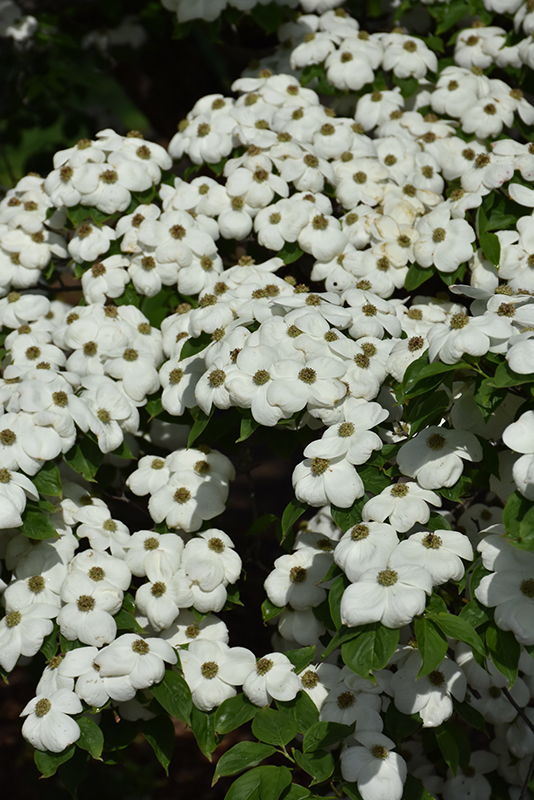Plant Finder
Hyperion® Flowering Dogwood
Cornus 'KF111-1'
Height: 20 feet
Spread: 20 feet
Sunlight:
![]()
![]()
Hardiness Zone: 6
Brand: Rutgers University
Description:
A heavily flowering hybrid with striking white blooms that cover it in spring; foliage takes on shades of yellow, purple, and orange in fall; vigorous with rapid growth; highly disease resistant; makes it a great choice for a front yard accent tree
Ornamental Features
Hyperion® Flowering Dogwood is smothered in stunning bracted white flowers held atop the branches from mid to late spring. It has attractive dark green deciduous foliage. The pointy leaves are highly ornamental and turn outstanding shades of yellow, orange and purple in the fall. It features an abundance of magnificent crimson berries from late summer to mid fall. The fruit can be messy if allowed to drop on the lawn or walkways, and may require occasional clean-up. The peeling gray bark and antique red branches are extremely showy and add significant winter interest.
Landscape Attributes
Hyperion® Flowering Dogwood is a deciduous tree with an upright spreading habit of growth. Its average texture blends into the landscape, but can be balanced by one or two finer or coarser trees or shrubs for an effective composition.
This is a relatively low maintenance tree, and should only be pruned after flowering to avoid removing any of the current season's flowers. It is a good choice for attracting birds to your yard. It has no significant negative characteristics.
Hyperion® Flowering Dogwood is recommended for the following landscape applications;
- Accent
- Shade
Planting & Growing
Hyperion® Flowering Dogwood will grow to be about 20 feet tall at maturity, with a spread of 20 feet. It has a low canopy with a typical clearance of 2 feet from the ground, and is suitable for planting under power lines. It grows at a fast rate, and under ideal conditions can be expected to live for 40 years or more.
This tree does best in full sun to partial shade. It does best in average to evenly moist conditions, but will not tolerate standing water. This plant should be periodically fertilized throughout the active growing season with a specially-formulated acidic fertilizer. It is very fussy about its soil conditions and must have rich, acidic soils to ensure success, and is subject to chlorosis (yellowing) of the foliage in alkaline soils. It is somewhat tolerant of urban pollution, and will benefit from being planted in a relatively sheltered location. Consider applying a thick mulch around the root zone in winter to protect it in exposed locations or colder microclimates. This particular variety is an interspecific hybrid.
Disclaimer - Rutgers Landscape & Nursery Plant Finder is an online resource representing many of the varieties that we carry over the course of the season, and is intended for informational purposes only. Inventory varies seasonally, so we cannot guarantee that every plant will be in stock at all times - please contact Rutgers directly for current availability.

